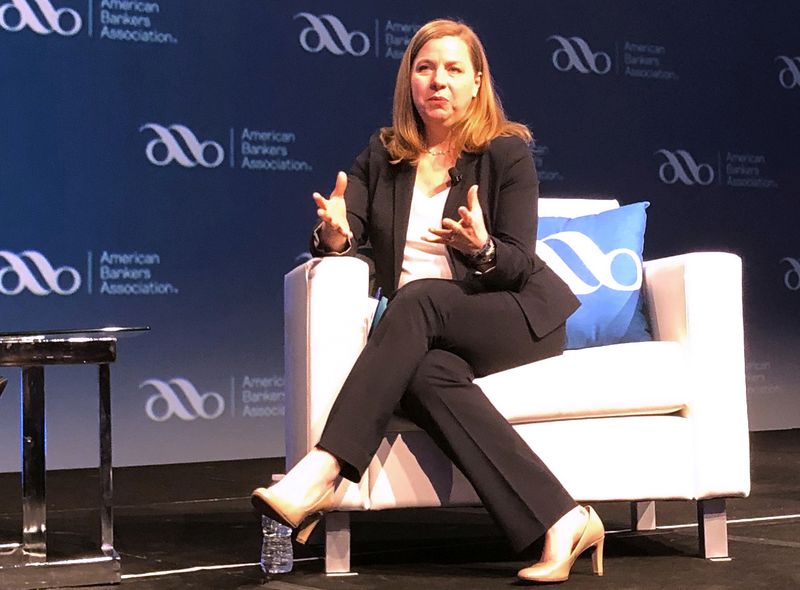(Reuters) - Federal Reserve Governor Michelle Bowman, among the U.S. central bank's most hawkish policymakers, on Wednesday called for a cautious approach to any further interest rate cuts, noting that inflation remains a concern and the labor market is strong.
The Fed reduced its policy rate earlier this month by a quarter of a percentage point to the 4.50%-4.75% range, a move that Bowman said she supported because it aligns with her preference for lowering short-term borrowing costs gradually. Bowman had cast a lone dissent on the Fed's half-percentage-point rate reduction in September.
With inflation still elevated and progress toward the Fed's 2% goal looking to have stalled, Bowman said in remarks prepared for delivery in West Palm Beach, Florida to the Forum Club of the Palm Beaches, "I would prefer to proceed cautiously in bringing the policy rate down to better assess how far we are from the end point, while recognizing that we have not yet achieved our inflation goal and closely watching the evolution of the labor market."
Bowman said she believes the neutral policy rate - the level of borrowing costs that neither bolsters nor brakes economic growth - is much higher that it was before the COVID pandemic, "and therefore we may be closer to a neutral policy stance than we currently think."
Indeed, she added, "we should also not rule out the risk that the policy rate may attain or even fall below its neutral level before we achieve our price stability goal."
Bowman said she would watch incoming data and meet with a broad range of contacts before the Fed's Dec. 17-18 meeting to assess the appropriateness of the current policy stance, and signaled that she feels the central bank is under no constraint to deliver another rate cut, as markets currently expect.
"I am pleased that the November post-meeting statement included a flexible, data-dependent approach, providing the (Federal Open Market) Committee with optionality in deciding future policy adjustments," she said.

The bigger risk for the Fed is to its price stability goal, though deterioration in labor conditions is possible, she said.
(This story has been corrected to show Fed's half-point rate cut was in September, not November, in paragraph 2)